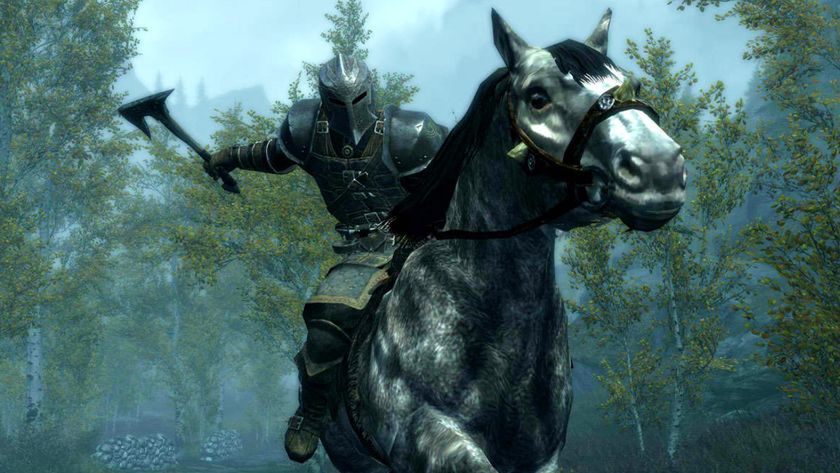How to build a better boss fight
What makes these epic fights so fun?
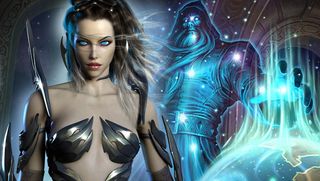
The beginnings of giants
Boss battles are video games ultimate test--and there is no greater complexity than those found in MMOs. The road to an endgame MMO boss battle is steep, requiring dozens of hours of leveling, questing, and general death-dealing, all to get to a bare-minimum point of adequate strength and equipment. Other players must also do the same. And on the flip side, that boss must be able to stand a chance against the absurdly unfair odds inherent to a 1-on-20 (or more) matchup.
Weve often wondered what arcane principles could guide the crafting of such a boss--one that carefully treads the fine line between being an unsatisfying pushover and a heinous brick wall of unfair difficulty. To get some answers, weve talked with the fine folks whose job it is to invent the daunting encounters seen in the likes of World of Warcraft, Rift, and EverQuest. By staying mindful of the following principles, theyve created some astounding boss encounters--the kind that demand intense, coordinated efforts with the promise of euphoric victory as reward.
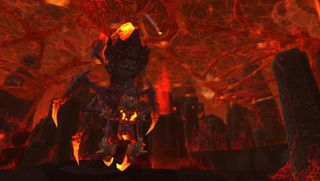
Form follows function
Tank-and-spank fights just wont cut it anymore. The years when raid bosses were simplistic, inert damage sponges are behind us; nowadays, devising an exciting, distinctive concept will make the best foundation for a memorable boss encounter. This is one of the most fun parts--because really, almost anything goes, says Ion Hazzikostas, the lead encounter designer on World of Warcraft. It comes down to a question of what's cool. And you know whats cool? Going toe-to-toe with a gigantic arachnid that has hardened lava for a husk.
When coming up with Ragnaros posse for the Firelands raid, Hazzikostas and his team channeled their inner adolescent pyromaniac. We all threw out ideas--hey, what if there's this huge, fiery spider that weaves webs that are strands of pure fire? Or what if there's a phoenix that bursts out of an erupting volcano? These are things that resonant on a level of That's really cool, and we think we can work with it. That's the starting point, the genesis, of the idea. From there, its simply a matter of ironing out the complementary mechanics that will play off this cool, core idea.
Pictured: Bethtilac, the Red Widow of the Firelands, who players can only take down by scaling up to her scorching web.
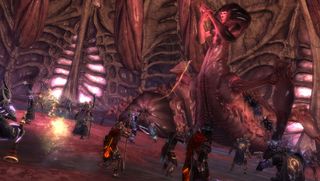
except when it doesnt
Then again, some bosses take shape before a design team even lays eyes on them. Character art can absolutely have a large influence on mechanics, says Colin Krausnick, an associate designer on Rift. Having abilities that fit the style and look of a boss encounter is more intuitive for people to understand, and leads to a better overall feel [of a fight]. It makes sense that a big boss like Regulos--which Krausnick aptly describes as a hulking monstrosity--would attack using devastating abilities that have a slow startup.
Other times, the logistics of an appealing art design will dictate how an encounter plays out. Larry Boles, a content designer on Rift, recalls the Matriarch of Pestilence as the perfect example. When we were looking for concepts for this boss, one of our artists presented a wonderful picture showing a behemoth creature with a multitude of legs that dwarfed the players that would be fighting her, says Boles. Since a creature with so many moving parts would take a lot of animation resources, we decided to make it a stationary fight and use mechanics that would force the players to reposition themselves around her.
Pictured: The Matriarch of Pestilence, from the Endless Eclipse raid, in all her icky glory.
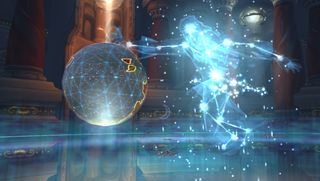
If you fail to plan...
End-game raids do not favor the unprepared. If your plan is to aggro a boss and just wing it, you may as well throw your gold away now and skip the whole gear-repairing process. But the demanding nature of high-end content creates an addictive gameplay loop of learning, planning, and executing with each new fight. If every encounter was a brain-dead walk in the park, progression would be meaningless. By requiring raid communication, continual reaction, and some strategic forethought, as Krausnick says, theres always something challenging to strive for--plus, you totally score bragging rights for world-firsts.
It's one of the greatest things the MMO genre can offerhaving to come together and function as a single well-oiled machine, says Hazzikostas. The process of both refining your big-picture strategy, and the individual execution of each of the moving parts of that machine to achieve [victory]--that's what keeps people coming back. Part of the fun of raiding is figuring out how something works.
Pictured: Algalon the Observer, found in Ulduar, is thought to be one of the most demanding and rewarding boss fights in WoWs history. The catch: You can only challenge him by plowing through the dungeons hard mode.
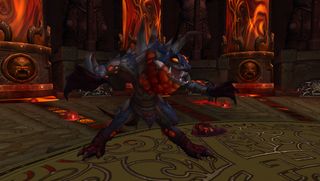
...sometimes that's OK
But not every player feeds off the anxiety of a white-knuckle boss battle, or the bliss of the first kill after investing hours into preparation and planning. Some people want to score epic loot without playing nightly, or see end-game content without expending more effort than a quick wiki consultation. And is that so wrong? After all, the hardcore playerbase is but a small fraction of an MMOs wider audience. Itd be a shame if the majority of players were deprived of cool content because of a slightly lesser time investment.
Thats where systems like WoWs Looking For Raid come in, offering simplified versions of existing bosses. At the cost of dropping less impressive loot, the same encounter designs have been tweaked to facilitate easier play with a pack of strangers, thanks to far more forgiving mechanics or the removal of mechanics entirely. One of the great challenges is coming up with mechanics that are new and fresh for [hardcore raiders], but remain accessible for someone who just got into raiding, says Hazzikostas. If you pour hard work into crafting an exhilarating encounter, its senseless to hide it from all but the top 1% of the community.
Pictured: Primordius, from the Halls of Flesh-Shaping in the Throne of Thunder, is simple enough that most any LFR group can figure out how to defeat him.
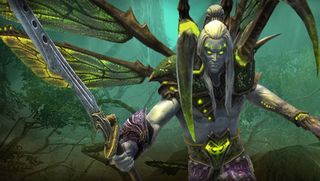
Complexity does not equal challenge
So if fewer, simpler mechanics makes a boss fight more accessible, then a multitude of complicated ones should really get the hardcore players going, right? Not quite. Theres a fine line between a challenging fight that feels good and is rewarding, and a challenging fight that is overly complex and punishing, says Krausnick. Nobody has fun if theyre repeatedly dying without making progress, or need to read an exhaustive dissertation before even attempting a fight.
Kyle Vallee, lead designer on EverQuest II, says that boss complication can be a tough thing to assess... In the case of raids, too busy can be frustrating. We can definitely make bosses that are not overly complicated, and still have them be difficult for the intended audience. The more unintuitive hoops you have to jump through in order to progress, the less enthralling it becomes to even attempt jumping through them.
Pictured: Swarmlord Khargroth, from the Primeval Feast, which was overly complicated to the point that Boles admits people just tried to find ways to avoid having to do it in the first place.
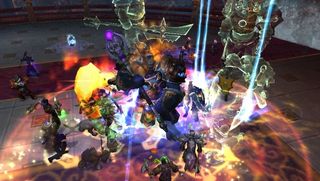
but a little complexity can go a long way
Like adding a potent spice to a hearty chili, mixing just the right amount of complexity into an encounter can make it that much more rich and enticing. Complexity is a dangerous pitfall of encounter design, says Boles. The tendency to keep adding more is easy to get into, but theres a [clear distinction] between different and annoying in terms of mechanics. Not every boss fight can nail the Goldilocks-esque just right of complexity, but player feedback has made it clear to designers that elaborate encounter mechanics are best in small doses.
Ultimately, players have finite multitasking capabilities. Just playing their classes [to the fullest of their ability] taxes some of that, says Hazzikostas. If something is unintuitive--if the raid leader has to talk for five minutes to explain how something works before anyone understands it--I think those are signs that we've gone a bit too far.
Pictured: The Spirit Kings encounter from Moshu'gan Vault, which is one of the easiest raid fights on Normal difficulty but one of the most complex encounters on Heroic, requiring high levels of situational awareness.
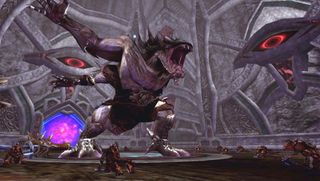
Familiarity isn't a drawback
Its the designers job to ensure that encounters never feel stale or rehashed--but that doesnt mean that familiar mechanics are automatically off the table. Theres a definite advantage to players having a good basis of familiar mechanics, says Boles. It gives them a set of expectations that make the game easier to understand. Krausnick agrees that a recognizable design allows players to react appropriately, and feel good about themselves when they execute [the proper response] well.
Simply put, its satisfying to know what you should do, and then being highly competent doing it. Boles recalls the positive feedback he got from players after designing Jultharin, which he describes as one of the most simplistic encounters, from a designer perspective. The boss itself had only three abilities, but the quick decision-making and coordination needed to address his wall mechanic is what really made the encounter shine.
Pictured: Baelon, from the Throne of Fear.
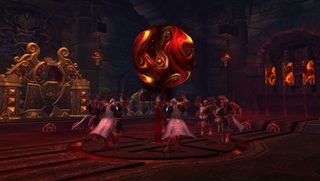
but players should constantly be surprised
Just because an encounter mechanic is fundamentally the same as one that preceded it, that doesnt mean it cant feel new and exciting. In fact, countless boss abilities are identical at the most basic level, but the way in which theyre presented and utilized can make a world of difference. Krausnick puts it this way: With the number of mechanics in raid fights generally being quite high, I think its reasonable for players to not want to learn six new things per fight.
The solution? Change the variables of a familiar mechanic. For example everyone knows to get out of the bubble of badness, says Krausnick. But I can change how big that bubble is, where the bubble is placed, how many people the bubble can hit, what effect the bubble has if it affects you, etc. It's the same familiar mechanic, but with different results.
Pictured: Dark Animus, from the Halls of Flesh-Shaping, uses a new mechanic involving a puzzle-based allocation of a mysterious substance.
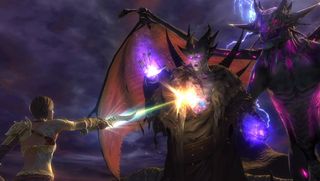
Always check your work
Of course, if designers created encounters entirely in a vacuum, the finished product would likely be a disaster once it went live. This is where playtesting comes in--and lots of it. By running the designers handiwork through the gauntlet of focus testing by their peers, QA testers, and public test realms, it becomes immediately apparent which mechanics are fun, and which ones really, really arent. Its on us to get our encounters testable and working as quickly as possible [so we can] start the iteration process, says Krausnick. As you mightve already guessed, the best judges of how enjoyable the new content is are the players themselves.
Rigorous testing is also the best way to catch exploits that could unbalance a fight. We look at what tactics [players are using] that we didn't anticipate or think of, and decide whether we need to adjust the fight to account for them," says Hazzikostas. Putting your concept through the QA ringer is the best way to dredge up any unforeseen issues--including what will ultimately end up on the cutting room floor.
Pictured: Regulos, from the Endless Eclipse raid.
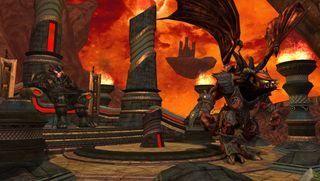
There will be cuts
If you cant kill your baby, then youre probably not fit to be a designer. Sorry, let us rephrase--no matter how much you love the mechanic you came up with, you need to be ready to cut it if your QA team finds its not so fun. When designing encounters, you can't be afraid of drastically changing existing mechanics [or] cutting it completely, says Krausnick. [With deadlines for patch releases] looming on the horizon, we might just have to cut mechanics no matter how near and dear they may be.
But just because your nifty mechanic doesnt work this time around doesnt mean you should ditch it forever. I dont try to force a mechanic to work, says Boles. If I think a mechanic has merit but it just wouldnt work out on the boss I built it on, I'll save it in my personal stockpile. Later on, when I can find a new encounter thats better suited for the discarded mechanic, I'll bring it out and try to work it in.
Pictured: Rallos Zek, from the Plane of War.
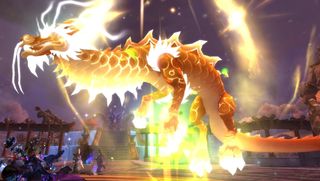
Give every class their moment
Fights are no fun if youre never in the limelight; much as in life, everyone needs to feel special sometimes. Getting a shot at saving the day, even if you arent the star tank or DPS, can be incredibly gratifying for players. And it keeps things interesting between encounters. Sometimes, says Hazzikostas, we have an idea that we want to do--like the Tsulong encounter recently, or the Dreamwalker in Icecrown Citadel awhile back--that were born from the idea of You know, it'd be kinda cool to have a fight where you win by having the healers heal something...let's try inverting that paradigm, and let the healers be the heroes for once.
But theres no guarantee that said class will even be present during the encounter--so its important to tune an encounter around a class role rather than a single ability. We make a concerted effort to not design around player class abilities, says Vallee. Doing otherwise would risk excluding players who feel like they cant contribute anything to a given fight.
Pictured: Tsulong, in the Terrace of Endless Spring, is a dragon that shifts between night and day phases; the day phase lets healers take the spotlight.
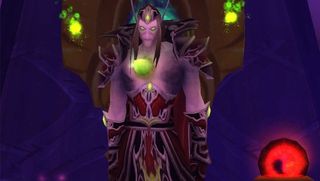
Dont make the player feel powerless
So youve put all this time and effort into crafting a fun boss fight. Whats the fastest way you can ruin it all? Turns out, there are a lot of design pitfalls to avoid, and nearly all involve taking control away from the player via confusion or an inability to react. Beyond the obvious things like undodgeable instakills, says Krausnick, I actively try to avoid adding too much randomness in my encounters. In my mind, nothings worse than someone dying and feeling as if there was nothing that they could have done to prevent it.
Other times, the problems are less obvious, though just as damaging. We're very wary of using extensive 3D movement, says Hazzikostas. Visually, you don't get a great sense of perspective, and it can be very disorienting. Its also important to uphold what Boles calls the overall mood of the game, avoiding reckless abuse of pop culture references and similarly jarring elements that take the player out of the game.
Pictured: Kael'Thas Sunstrider, the final boss of Magister's Terrace, had a Gravity Lapse ability that vaulted the entire raid into zero-g movement, which threw many players completely off-balance.
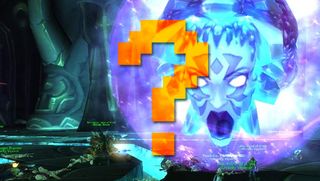
Bosses down, zone clear
By following the aforementioned principles, MMO designers are able to craft the kinds of epic encounters that we know and love. Which boss encounters do you remember most fondly, and did they adhere to the theories of these designs? If youre thinking of getting into game design yourself, it might be wise to bookmark this page--you never know when these nuggets of wisdom from the pros will come in handy.
If you're looking for more, check out Why do we love the games that hate us? and 25 new MMORPGs on the horizon for 2013 and beyond.

Lucas Sullivan is the former US Managing Editor of 12DOVE. Lucas spent seven years working for GR, starting as an Associate Editor in 2012 before climbing the ranks. He left us in 2019 to pursue a career path on the other side of the fence, joining 2K Games as a Global Content Manager. Lucas doesn't get to write about games like Borderlands and Mafia anymore, but he does get to help make and market them.
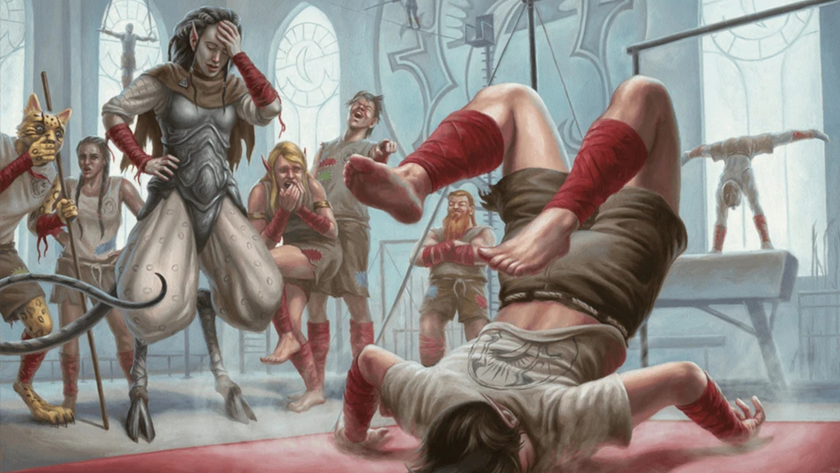
The Baldur's Gate 3-themed Stardew Valley mod that Larian boss Swen Vincke called "amazing" gets DMCA'd by D&D publisher Wizards of the Coast
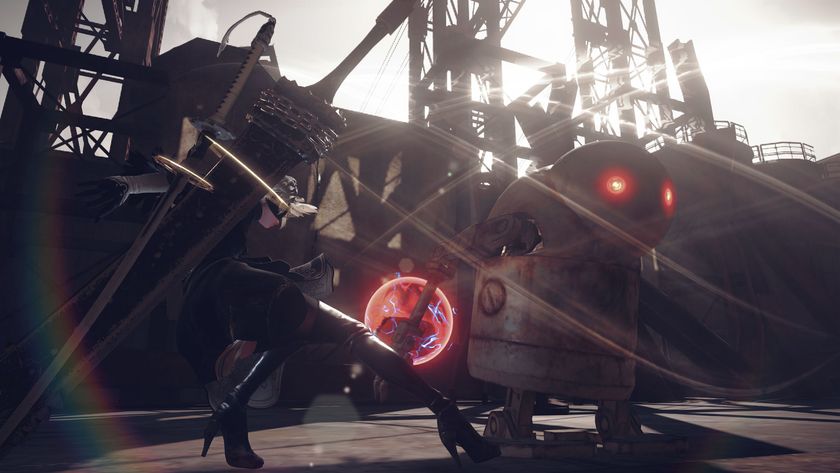
After PlayStation boss praises Nier Automata as a savior for Japanese games overseas, Yoko Taro says he was specifically told to focus on Japan because it wouldn't fly overseas

The Baldur's Gate 3-themed Stardew Valley mod that Larian boss Swen Vincke called "amazing" gets DMCA'd by D&D publisher Wizards of the Coast

After PlayStation boss praises Nier Automata as a savior for Japanese games overseas, Yoko Taro says he was specifically told to focus on Japan because it wouldn't fly overseas
